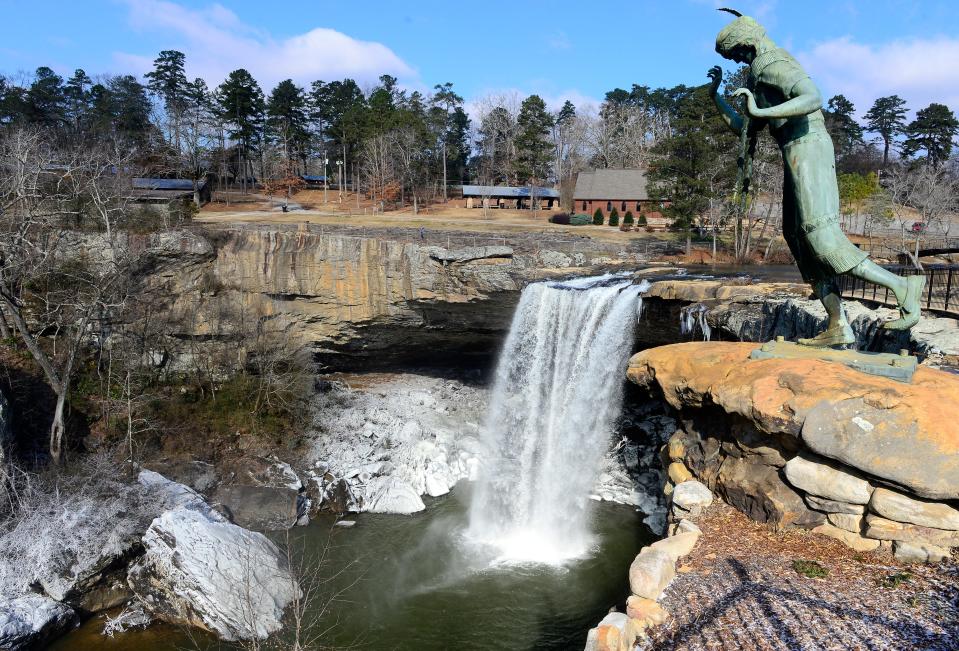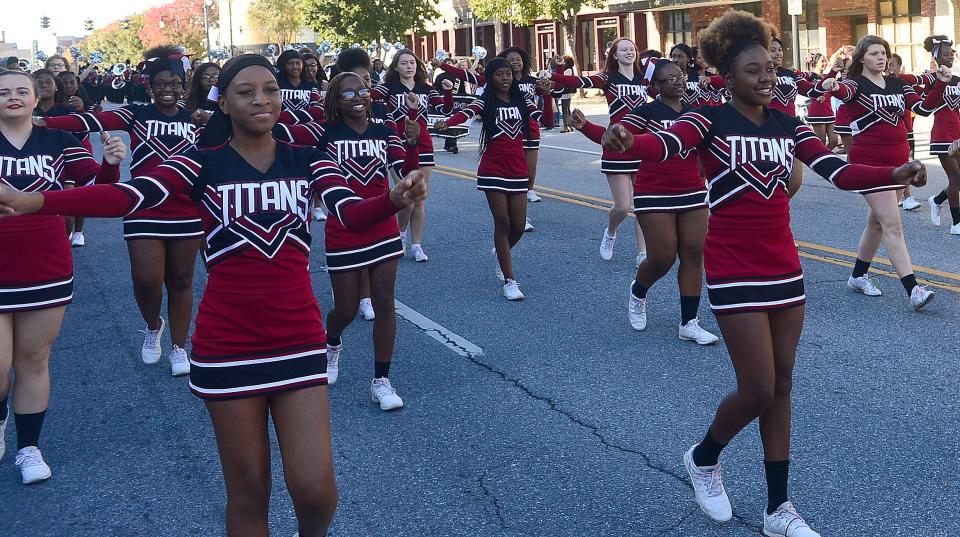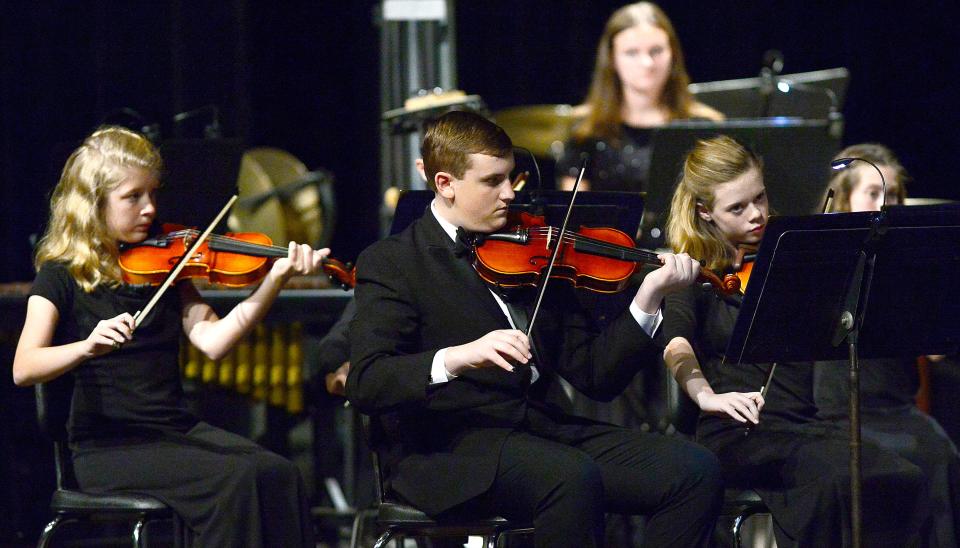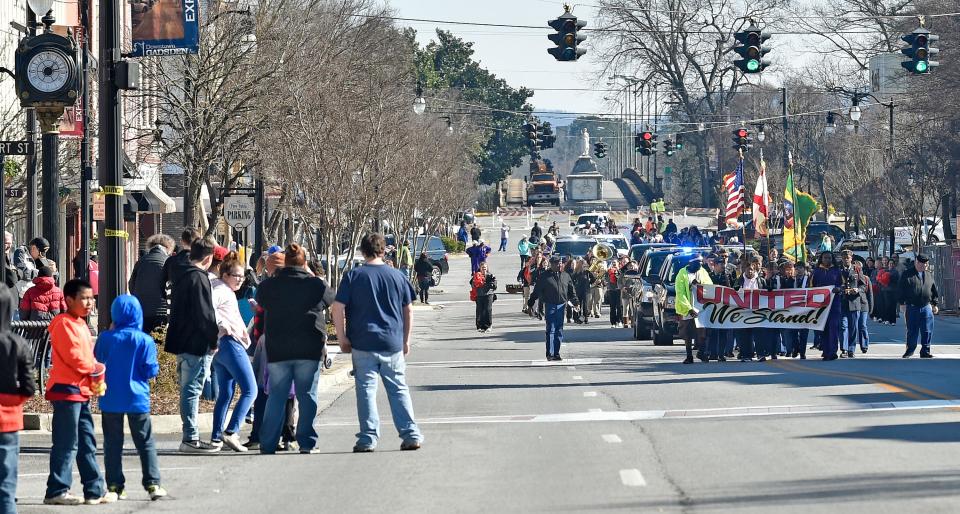GROW Gadsden master plan paints ambitious future for city
The Gadsden City Council on Tuesday got a sneak preview of the city's first new comprehensive master plan in a half-century.
While some aspects could change before it's finalized, it features ambitious proposals that would reconfigure — and, it's hoped, revitalize — the city in multiple ways.
Representatives of Goodwyn Mills Cawood made the presentation on GROW Gadsden during the pre-council work session.
A master plan essentially sets out a road map for a municipality's future, although Alabama's State Code requires it to have “the general purpose of guiding and accomplishing a coordinated, adjusted and harmonious development of the municipality and its environs” and promote “health, safety, morals, order, convenience, prosperity and general welfare as well as efficiency and economy in the process of development.”

Bryan King, an urban planner with Goodwyn Mills Cawood who gave the bulk of Tuesday's presentation, described it as “a vision for your city, and a road map on how to get to that defined vision.”
Gadsden last had a master plan in 1974, and the city employed Goodwin Mills Cawood, a top engineering and architecture firm in the Southeast, roughly a year ago to remedy that.
The firm first conducted an analysis of existing conditions and prepared seven reports of roughly 150 pages each. It then conducted multiple public meetings (the pre-council presentation was described as the 16th) where local residents could offer their input on what they'd like to see in the plan, where they could, as council President Kent Back put it, “raise their hands and say they want to see 'x, y and z' and want our city to have 'a, b and c.'”
King called it “proactive democracy” and said there had been interactions with some 2,000 people.

The public will get a chance to chime in on the final version (which the council will have in its hands in less than two weeks, according to the Goodwyn Mills Cawood representatives) at an event on Feb. 20, time and site to be determined.
Gadsden's Planning Commission will consider the plan the following day. It will get a first reading before the council on Feb. 27, with final approval slated for March 5.
“I am impressed with what the people of Gadsden and the GROW Gadsden team have developed in this plan so far.,” Mayor Craig Ford said. “I’m looking forward to working with the City Council to begin the implementation phase in the next few months.
“As we wind down the process, I am realizing the easy part is over once the plan is adopted,” Ford said. “The hard part comes in figuring out how to make sure it lives on and stays fresh so Gadsden can truly grow again. But I believe the people of Gadsden are ready for the growth that this plan is calling for.”
'The Natural City'
The first chapter of the plan, “The Natural City,” covers parks and recreation and riverfront projects. Priorities will include:
• Continued improvements at Noccalula Falls Park and Campground (King said the key is making sure it's cohesive and that its value as a resource for the community and visitors is acknowledged);
• Connecting the Black Creek Trail network to downtown;
• Developing the Meighan Sports Complex (King cited its potential as a regional attraction, and noted that the larger Sand Mountain Park and Amphitheater in Albertville had provided that city a $37 million return on its investment over three years);
• Developing a downtown riverfront district (King noted the growth along the riverfront in Chattanooga, Tennessee, after it removed the highway connecting downtown and the riverfront in 1990);
• Developing the East Gadsden riverfront and expanding it from Dub Parker Park to behind Riverview Regional Medical Center;
• Connecting the Jim Martin Wildlife Park to the adjacent Lake Gadsden neighborhoods and developing the right of way there.

The Connected City
Chapter 2, “The Connected City,” covers mobility, corridors and arts and culture. The priorities are:
• Realigning U.S. Highway 411/Albert Rains Boulevard, which Ford's administration has touted from the start (King called it an underutilized area which great development potential);
• Improving Noccalula Road to better reflect the area's assets;
• Connecting gaps in the city's sidewalk network;
• A citywide pavement assessment to identify and prioritize roads that need repairing (King noted that Gadsden has 4,000 acres of local streets, which is a huge number for a city of its population, although the goal should be to increase the population, not decrease the number of streets);
• The expansion of Interstate 759 to U.S. Highway 431/278 in East Gadsden (along with improving traffic, King said it will unlock “tons of potential” on that side of town);
• Enhancements at the Northeast Alabama Regional Airport (an application to fund a new terminal has been filed with the Federal Aviation Administration);
• Improvements to the Mort Glosser Amphitheatre that retain the facility's historic character, but create a better experience for those attending events there and improve its visibility for visitors;
• The creation of a public arts commission to prioritize and help fund public art and culture;
• Lighting Memorial Bridge on Broad Street as an iconic visual statement to the city;
• Creating an Alabama City arts district on Wall Street.

The Growing City
The third chapter, “The Growing City,” focuses on housing, downtown, land use, city administration and economic development. Priorities will include;
• Creating a pre-approved housing design catalog for building permits to jump-start infill development;
• Continued expansion of the Land Bank Authority;
• Prioritizing riverfront and downtown housing to increase population density and growth near the city's assets;
• Redesigning Broad Street's streetscape to reinforce downtown as an active destination (King called it the economic engine and cultural heart of the city);
• The already planned relocation of City Hall to the present Regions Bank building;
• Creation of a Business Improvement District to assist in funding downtown projects;
• Updating the city's zoning ordinance and maps to prioritize development;
• Revitalizing historic commercial areas to activate retail development and increase walkability;
• Redefine waterfront zoning to update and enforce design standards to ensure, as King put it, that the river is treated as “the front door” for businesses that locate there;
• Prioritizing commercial and retail development in North Gadsden;
• Consolidate city operations to improve efficiency (King said the city is still operating on a level reflecting its past peak population);
• Expand police substations throughout the city;
• Update school branding, attaching the “Titan” name to all middle schools in the Gadsden City system to promote unity;
• Prioritize diversity in recruiting industry, acknowledging the potential in agriculture, aviation, health care, technology and tourism;
• Emphasize quality of life and placemaking (according to the Congress for the New Urbanism, “the creation of places where people want to live, work, plan and learn”) as drivers of economic development.
This article originally appeared on The Tuscaloosa News: How the GROW Gadsden master plan will revitalize the city

